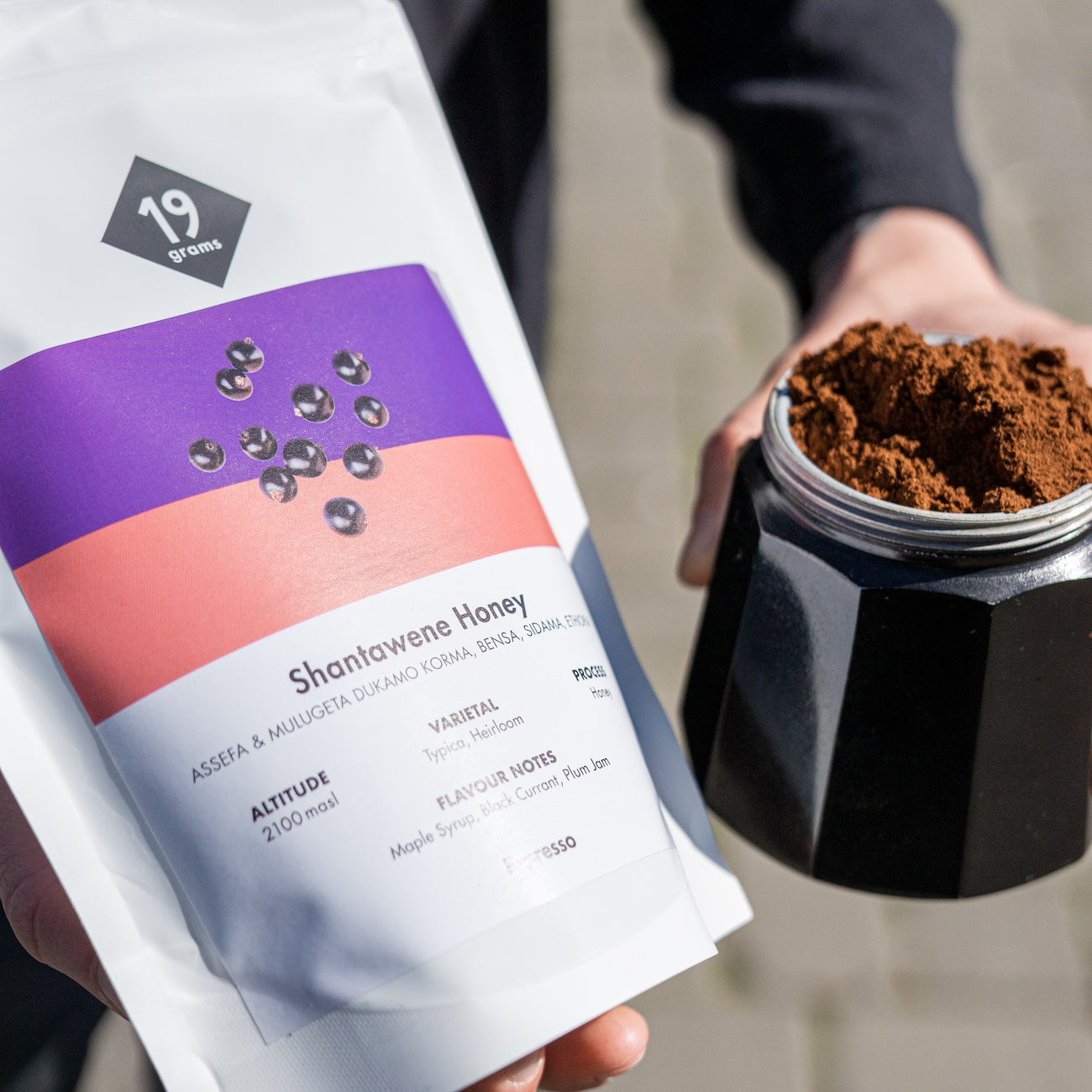A hand lever machine is a special type of espresso machine in which the brewing pressure is generated manually with the help of a hand lever. It was one of the first machines that could brew an espresso as we understand it today, namely with a pressure of 9 bar and a temperature of 92 °C. In the 1960s, hand-lever machines were largely replaced by machines with electric pumps. Today, they are still widespread, especially in rural areas of southern Italy and in Latin America.
The brewing group of a hand-lever machine contains a piston that builds up the necessary brewing pressure. This piston is set in motion with the hand lever and thus moved between the working and rest positions. If you pull the lever upwards, the piston is also moved upwards into the working position. A spring is tensioned and opens the water inlet so that water flows into the brewing group. If you then carefully release the hand lever, the piston lowers back to the rest position and closes the water inlet, with the spring building up pressure in the brewing chamber. The espresso is then extracted. The period between the inflow of the brewing water and reaching the brewing pressure is called preinfusion.
One of the advantages of hand-lever machines is that they are almost wear-free and work very quietly. They also brew espresso very quickly. However, this is not as simple as pressing a button as with automatic coffee machines. Hand-lever machines work purely mechanically - so manual labour is required to make an espresso. On the one hand, this is another advantage because it ensures a particularly authentic brewing experience. On the other hand, it can also be a disadvantage. Because the user of the machine himself influences the quality and intensity of the espresso. Accordingly, a little experience is necessary for a good result.





